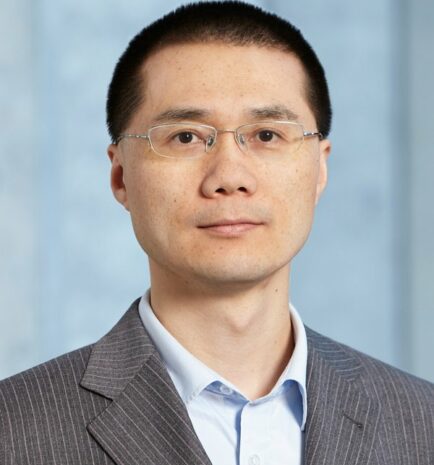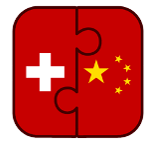
When the Black Death (1347-1353) swept across the continent claiming as much as a third of the European population, king Philip VI of France ordered the University of Paris, the best and brightest minds of his day, to find an explanation for what was going on. After much deliberation the experts proposed that “a triple conjunction of Saturn, Jupiter and Mars in the 40th degree of Aquarius” was responsible for the plague, with the runner-up explanation blaming it on tectonic activities. This episode illustrates how humans tend to be fixated on the macro-scale rather than taking into account the small and invisible world around them.
Needless to say, the current pandemic has been another reminder that humans are ill-equipped to react to microscopic dangers around them. We might have no trouble detecting a car racing towards us and speeding up to get to the end of the crossroads; we might be able to read body language and conclude that this guy at the bar has had a few beers too many. We might, in other words, be very aware of all the dangers encountered on a macro-scale. What doesn’t announce itself to our eyes, however, quite often goes unnoticed.
Fortunately, we don’t live in the Middle Ages anymore and have since come up with means of detecting and measuring the invisible dangers around us. In our very first installment of the Connected series event we will explore this topic in detail. Our two speakers are leading the SSSTC (Sino-Swiss Science and Technology Cooperation) funded project “Emission quantification, transport modeling and risk evaluation of airborne antibiotic resistance genes from key sources in Zurich and Beijing”.
Prof. Dr. Jing Wang will talk about a break-through sensor technology which is capable of detecting tiny airborne pathogens in general and allows for accurate SARS-CoV-2 detection in particular, making it possible to continuously monitor the ambient viruses in the air. The virus sensor can also serve as an alternative method to the standard methods for COVID-19 diagnosis. Prof. Dr. Wang collected ambient particle matter samples from 19 cities across the globe (Zurich and Beijing among them) and will discuss some of his most important findings.
Our second speaker, Prof. Dr. Min Gao, will focus on bacterial aerosols in animal farms. According to some estimations, 73% of all antimicrobials sold on Earth are used in animals raised for food. This is a matter of concern because antibiotic use in livestock has been shown to contribute to the growth of antibiotic-resistant bacteria which could increase the amount of drug-resistant infections and pose a serious threat to humans and animals alike. Having done both qualitative and quantitative analyses, Prof. Dr. Gao will discuss the level of pathogens in animal farms and the growing detection of these invisible threats in the global air. Her results will provide valuable information on how to calculate the microbial flux from animal farms and help evaluate the contribution of animal related-target genes to urban air pollution.
Event Rundown
18:00-18:10 Introduction
18:10-18:30 Fighting the invisible enemy – studies on airborne pathogens
(Prof. Dr. Jing Wang – Associate professor in the Institute of Environmental Engineering at ETH Zurich)
18:30-18:50 The characteristics of antibiotic-resistant bacterial aerosol in animal farms
(Prof. Dr. Min Gao – Associate Professor of environmental engineering at the Beijing Academy of Agriculture and Forestry Sciences)
18:50-19:00 Q&A
Speakers
-
![]()
Bio
Prof. Dr. Jing Wang
Associate professor in the Institute of Environmental Engineering at ETH ZurichJing Wang is an associate professor in the Institute of Environmental Engineering at ETH Zurich (Swiss Federal Institute of Technology Zurich), leading the group of Air Quality and Particle Technology. He is also a group leader at Empa (Swiss Federal Laboratories for Materials Science and Technology). Jing Wang obtained his PhD degree from the Department of Aerospace Engineering, University of Minnesota in 2005. He was one of the keynote speakers in the International Aerosol Conference 2014 and AsianNANO2018. His main research interests are air quality, environmental and health impact of airborne pollutants, airborne nanoparticle measurement and emission control, air and water filtration. He is currently an editor for Aerosol Science and Technology.
-
![]()
Bio
Prof. Dr. Min Gao
Associate professor of environmental engineering at the Beijing Academy of Agriculture and Forestry SciencesMin Gao graduated from Research Center for Eco-Environmental Sciences, Chinese Academy of Sciences(CAS). She is currently Associate professor of environmental engineering at the Beijing Academy of Agriculture and Forestry Sciences. She has been the lead PI of 10 research projects over the last 5 years from funders including the National Natural Science Foundation of China, Natural Science Foundation of Beijing and State Key Laboratory of NBC Protection for Civilian. She has received awards from the Beijing Top Talents Foundation (2019), Beijing Nova Program (2015) and Beijing excellent “Youxiu” person (2014). She has published about 20 papers, in journals including Environment International, Environmental Pollution, and Atmospheric Environment.
Connected Series
The Connected Series is a new format at Swissnex in China putting a spotlight on the best Sino-Swiss collaboration projects and research efforts. It highlights how teams from both countries can best work together to create synergies and get their projects off the ground.


